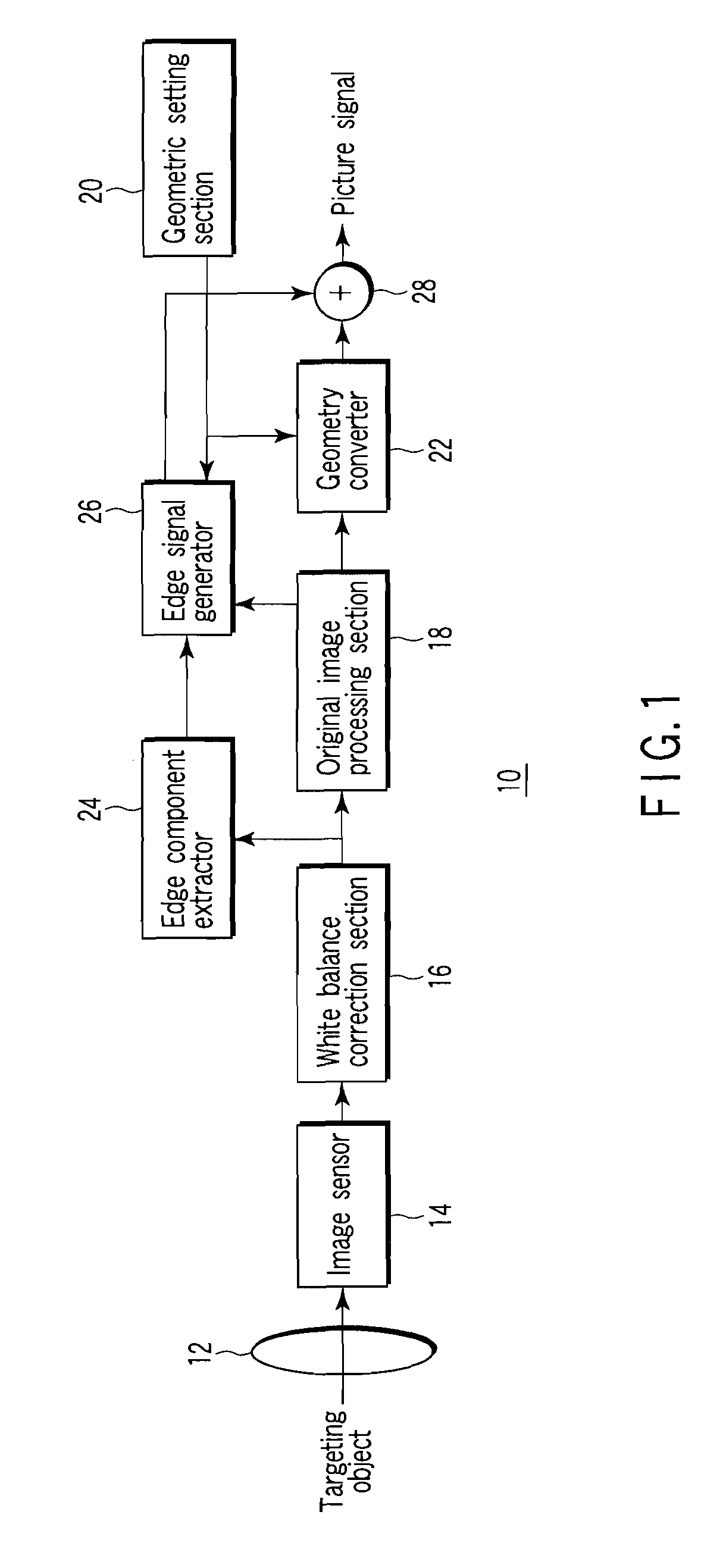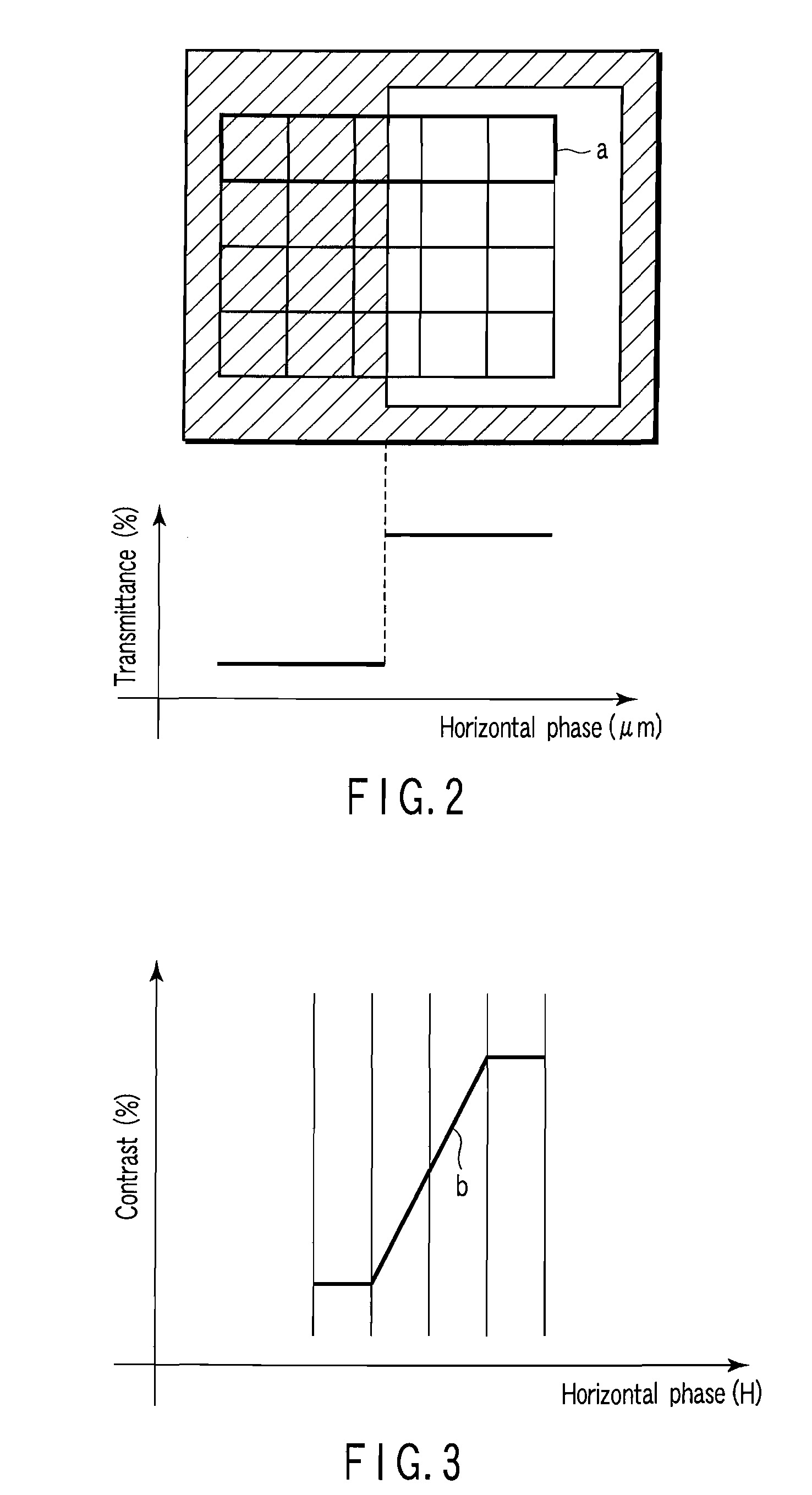Camera
a technology of camera and image, applied in the field of camera, can solve the problems of affecting the inability to restore the inability to capture the original resolution of the picture, so as to improve the apparent resolution or sharpness of the captured imag
- Summary
- Abstract
- Description
- Claims
- Application Information
AI Technical Summary
Benefits of technology
Problems solved by technology
Method used
Image
Examples
first embodiment
[0056]FIG. 1 is a block diagram showing a configuration of a camera according to a first embodiment of the present invention.
[0057]In FIG. 1, a camera 10 includes an optical system 12, an image sensor 14, a white balance correction section 16, an original image processing section 18, a geometric setting section 20, a geometry converter 22, an edge component extractor 24, an edge signal generator 26, and an image synthesizer 28.
[0058]The optical system 12 generates an optic image from a targeting object. The image sensor 14 photoelectric converts the optic image generated in the optical system 12 to generate a output signal from image sensor. The white balance correction section 16 corrects the white balance of the output signal from image sensor to generate a white balanced imaging signal. The original image processing section 18 generates an original picture signal from the white balanced imaging signal. These components are used in a typical camera.
[0059]The geometric setting sect...
second embodiment
[0137]A second embodiment of the present invention will be described below.
[0138]The second embodiment of the present invention is a camera having a configuration in which the edges of the image extractor shown in the first embodiment according to the thinning-out single color extraction method is made conforming to, e.g., a high-speed electronic viewfinder (EVF).
[0139]FIG. 15 is a block diagram showing a configuration of a camera according to the second embodiment of the present invention.
[0140]The basic configuration and operation of the camera according to the second embodiment are the same as those of the camera according to the first embodiment shown in FIG. 1. Thus, in FIG. 15, the same reference numerals as those in FIG. 1 are used for the same parts as those in FIG. 1, and the descriptions thereof will be omitted and different configuration and different operation from the first embodiment will be described.
[0141]In FIG. 15, a camera 30 includes an optical system 12, an imag...
PUM
 Login to View More
Login to View More Abstract
Description
Claims
Application Information
 Login to View More
Login to View More - R&D
- Intellectual Property
- Life Sciences
- Materials
- Tech Scout
- Unparalleled Data Quality
- Higher Quality Content
- 60% Fewer Hallucinations
Browse by: Latest US Patents, China's latest patents, Technical Efficacy Thesaurus, Application Domain, Technology Topic, Popular Technical Reports.
© 2025 PatSnap. All rights reserved.Legal|Privacy policy|Modern Slavery Act Transparency Statement|Sitemap|About US| Contact US: help@patsnap.com



